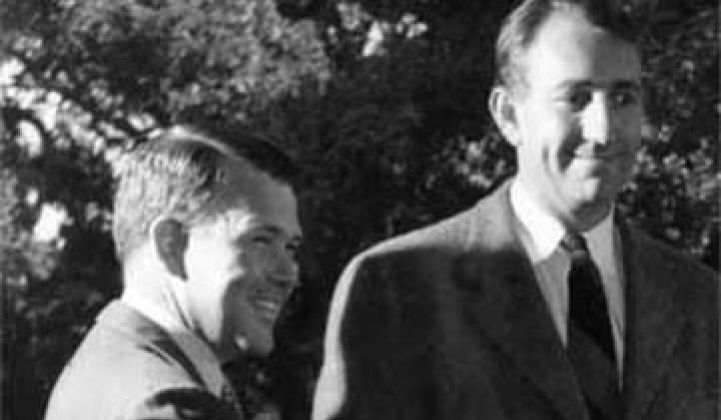Who knew that Hewlett-Packard was into fuel cells?
Back in the earlier part of the decade, HP filed and obtained a number of patents for fuel cells, particularly proton exchange membrane fuel cells powered by hydrogen. Toshiba and other consumer electronics companies were doing the same then too.
The company, however, never pursued commercialization. But rather than just sitting on the intellectual property, it has decided to sell these patents off. The three patent lots -- which collectively contain 86 patents -- are being sold by WavePoint, and the minimum purchase price is $500,000 per lot.
Although the patents revolve around hydrogen fuel cells, the patents also relate to solid oxide fuel cells, according to Paul Cannata, director of business development at WavePoint. Bloom Energy, which came out of stealth last night on 60 Minutes, makes solid oxide fuel cells. HP's patents also potentially pertain to the design of portable fuel cells, a technology the military has examined for years as a way to provide troops in the field easier access to electricity. Fuel cells can also be viewed as energy storage devices. If there is a tank of the appropriate hydrocarbon handy, you can make electricity on demand.
The first lot consists of 27 patents and revolves around hydrogen generation, fuel flow control and increasing fuel cell efficiency. Patent 6790416, for instance, discusses a way to generate hydrogen from water with sodium borohydride and electricity. It is similar to the low-energy approach contemplated by SignaChem and Alumifuel. Patent lot number 2 consists of 17 patents revolving around fuel cell cartridges (think of print cartridges cross-bred with batteries), and the final lot of 42 patents revolves around the design of a fuel cell stack.
This last lot could potentially be the most interesting because it deals with material science, which could be exploited in other products or types of fuel cells. U.S. patent number 6620542, for example, describes a porous metal that effectively eliminates the need for microchannels or micro-plumbing to allow oxygen and/or fuel to move around inside a fuel cell.
At the beginning of the decade, start-ups and large outfits like IBM and Microsoft began to try to extract more value from their intellectual property portfolios through auctions and/or licensing. Some feared that it would lead to an explosion of litigation with so-called patent trolls wielding patents as a way to extract legal settlements from innocent bystanders.
Although a few trolls emerged, the reality has been far more prosaic. Patent auctions actually occur relatively infrequently and the U.S. economy has not been brought to its knees by patent disputes. (And don't ever listen if Google starts whining about patents. The company got started with an exclusive license on patents owned by Stanford.)
In fact, some of the more innovative ideas in green tech have come out of the intellectual property industry. TerraPower, a start-up that wants to make modular nuclear reactors that don't need to be refueled for 30 years, emerged out of Intellectual Ventures, an intellectual property firm co-founded by ex-Microsoft chief scientist Nathan Myhrvold. IBM, meanwhile, has found that a material it originally created for immersion lithography could be used to reduce the cost and energy required to desalinate seawater. HP, meanwhile, has devised some novel transistor patents that it has tried to license.
Interested parties should contact WavePoint before the end of the month.



